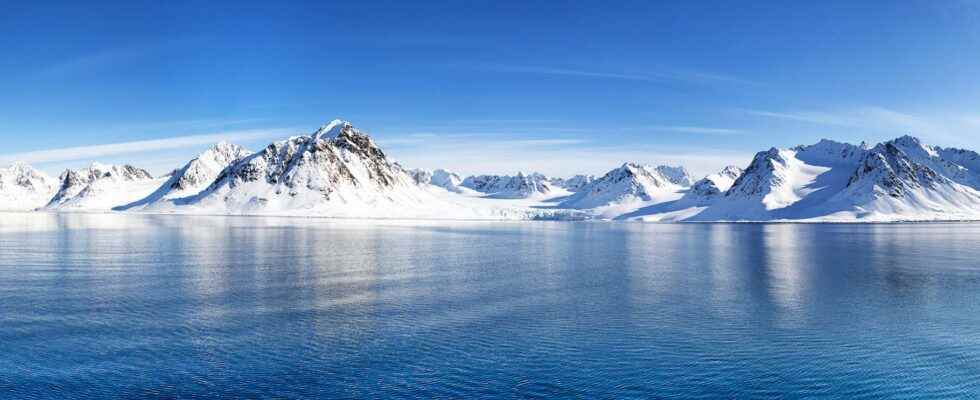To explain the speed with which the Arctic seems to want to warm up, scientists cite, among other things, a phenomenon they have called Atlanticification. A phenomenon by which the warm waters of the Atlantic penetrate the cold waters of the Arctic. And researchers are telling us today that the phenomenon began much earlier than they had imagined.
You will also be interested
[EN VIDÉO] The arctic is not the same The transformation of the Arctic into a warmer, less frozen and biologically different region is undoubtedly underway today. Under the effect of global warming, temperatures are rising, melting the ice and greening the tundra, triggering gigantic forest fires in the region and profoundly modifying the environment of animal populations living in the Arctic. And consequences are now to be expected for the whole planet. © NOAA
Somewhere in northern Scandinavia there is a region, in the Barents Sea, where the Atlantic Ocean comes into contact with the Arctic Ocean. In contact or even, in collision, one might say. Because scientists have observed a penetration of hot and salty water from the Atlantic Ocean into the cold waters of the Arctic Ocean. A phenomenon significant enough for researchers to give it a name. They talk about Atlanticification.
A phenomenon that they thought was quite recent. But a Cambridge University team (United Kingdom) argues today that theArctic ocean is actually warming up by atlantification already since the beginning of the XXe century. Thus showing a connection between the two oceans much closer than scientists had imagined. With probable consequences on the retreat of sea ice and the rise in sea level.
Remember that all the world’s oceans are currently warming under the effect of anthropogenic climate change. The smaller and shallower Arctic Ocean is warming faster. More than twice as fast, say the researchers. Particularly over the past twenty years. And what the Cambridge University team wanted to do is put this warming in a longer historical context.
Climate models to review
Unfortunately, satellite data does not go back more than forty years. So, the researchers turned to geochemical and ecological data recorded in the sediment oceanic on the Fram Strait side, between Greenland and Svalbard. They were thus able to reveal changes in temperature and salinity occurring throughout the last 800 years. And observe a certain constancy of these values. Until the very beginning of the XXe century! The researchers note that the ocean temperature Arctic has risen by about 2 ° C since 1900.
However, they still ignore the mechanism behind this rapid Atlanticization. They simply underline a strong correlation with a slowing of the meridian circulation of Atlantic reversal (Amoc) in the second part of the XIXe century. However, if anthropogenic global warming continues and with it, the thaw of the ice cap of Greenland, the deep circulation in this region should still slow down. With the possible consequence, therefore, of a new acceleration of Atlanticization.
The researchers also draw attention to the fact that no climate model replicates the early Atlanticization they unearthed. The sign of an at least incomplete understanding of the mechanisms at the origin of the phenomenon. The sign, perhaps, that the Arctic Ocean is even more sensitive to anthropogenic global warming than scientists had imagined. And certainly also a sign of the need to revise the forecasts. Especially since as this ocean heats up, the ice melts and the sea level rises. The ice melts and also exposes an ocean which reflects less well the rays of the Sun. Raising the temperature a little more. The ice melts and when the permafrost finally begins to melt, it will release a quantity of greenhouse gas that he had stored. From greenhouse gas which will further fuel global warming.
The Arctic Ocean is heating up
The Arctic Ocean continues to warm. West of Spitsbergen, the temperature of the upper water layer reaching a depth of 500 meters is currently 0.6 degrees higher than the values measured in 2003.
Article from ADIT BE Germany published on 09/05/2004
We have observed a warming up to depths of 2,000 meters, as evidenced by the Institute Alfred Wegener for the Polar and Marine Research of Bremerhaven.
The measurements were taken on board the research vessel “Polarstern”. This signal is extremely significant. To give an even more detailed account of climatic events, the “Cryosat” satellite should continuously scan from March 2005 the thickness of the polar ice cap over 700 kilometers.
Interested in what you just read?
.
fs11
